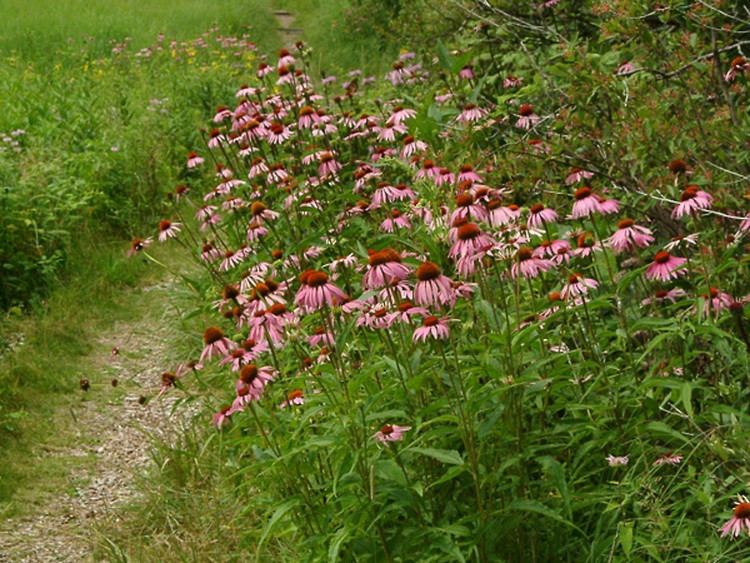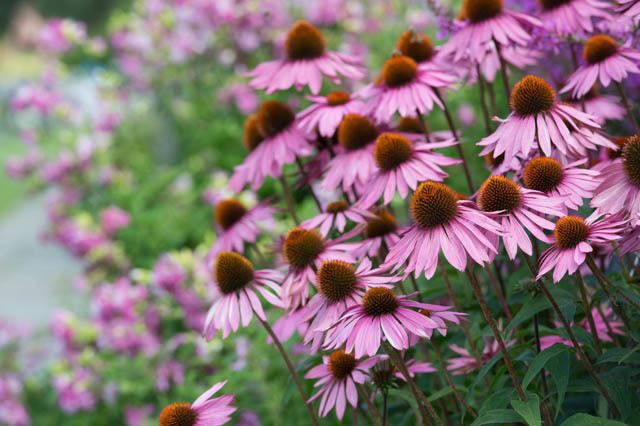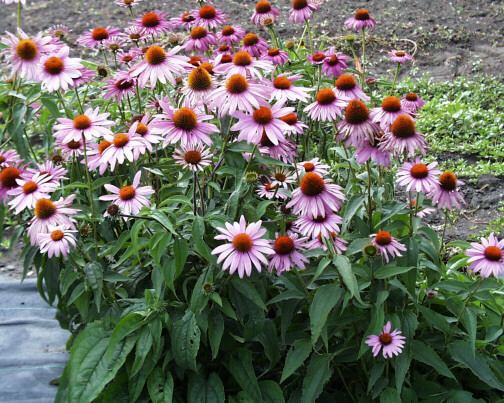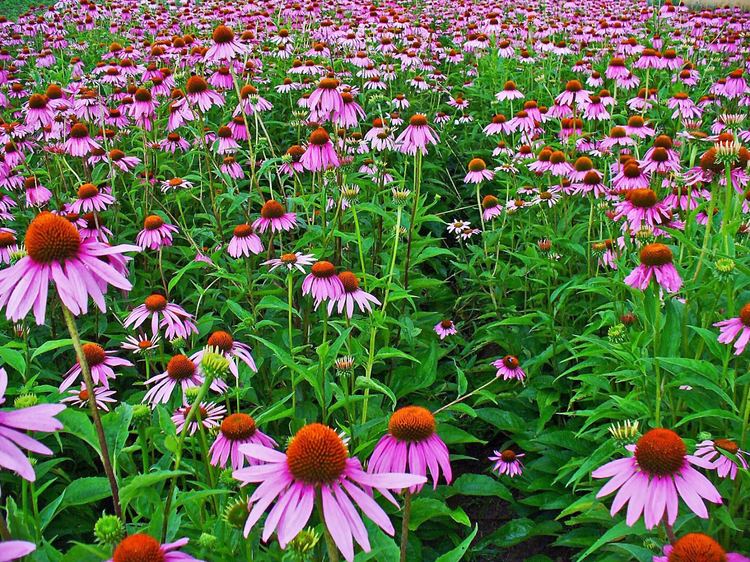Tribe Heliantheae Rank Species | Genus Echinacea Higher classification Coneflower | |
 | ||
Similar Echinacea angustifolia, Coneflowers, Daisy family, Yarrow, Echinacea pallida | ||
Plant portrait purple coneflower echinacea purpurea
Echinacea purpurea (eastern purple coneflower , hedgehog coneflower, or purple coneflower) is a North American species of flowering plant in the sunflower family. It is native to eastern North America and present to some extent in the wild in much of the eastern, southeastern and midwestern United States as well as in the Canadian Province of Ontario. It is most common in the Ozarks and in the Mississippi/Ohio Valley.
Contents
- Plant portrait purple coneflower echinacea purpurea
- Echinacea purpurea purple coneflower how to grow echinacea
- Description
- Cultivation
- Propagation
- Predators
- Chemistry
- Traditional herbal medicine
- Present day uses
- References

Echinacea purpurea purple coneflower how to grow echinacea
Description

Echinacea purpurea is an herbaceous perennial up to 120 cm (47 in) tall by 25 cm (10 in) wide at maturity. Depending on the climate, it blooms throughout spring to late summer. Its cone-shaped flowering heads are usually, but not always, purple in the wild. Its individual flowers (florets) within the flower head are hermaphroditic, having both male and female organs in each flower. It is pollinated by butterflies and bees. Its habitats include dry open woods, prairies and barrens, as well as in cultivated beds. Although the plant prefers loamy or sandy, well-drained soils, it is little affected by the soil's pH.
Cultivation

Echinacea purpurea is also grown as an ornamental plant, and numerous cultivars have been developed for flower quality and plant form. The plant grows in sun or light shade. It thrives in either dry or moist soil and can tolerate drought once established. The cultivar 'Ruby Giant' following has gained the Royal Horticultural Society's Award of Garden Merit.
Propagation

Echinacea purpurea can be propagated either vegetatively or from seeds. Useful vegetative techniques include division, root cuttings, and basal cuttings. Clumps can be divided, or broken into smaller bunches, which is normally done in the spring or autumn. Cuttings made from roots that are "pencil-sized" will develop into plants when started in late autumn or early winter. Cuttings of basal shoots in the spring may be rooted when treated with rooting hormones, such as IBA at 1000 ppm.

Seed germination occurs best with daily temperature fluctuations or after stratification, which help to end dormancy. Seeds may be started indoors in advance of the growing season or outdoors after the growing season has started.
Predators
Slugs eat this plant.
Chemistry
Echinacea purpurea contains multiple substances, such as polysaccharides, caffeic acid derivatives (including cichoric acid), alkylamides, and glycoproteins.
Traditional herbal medicine
In indigenous medicine of the native American Indians, the plant was used externally for wounds, burns, and insect bites, chewing of roots for toothache and throat infections; internal application was used for pain, cough, stomach cramps, and snake bites.
Present-day uses
The plant is important economically, to the pharmaceutical trade. It is purported that all parts of the purple coneflower stimulate the immune system.
Well-controlled trials studying these uses are limited and low in quality. Study results are mixed on whether preparations including Echinacea can be useful for upper respiratory tract infections including colds.
Side effects include gastrointestinal effects and allergic reactions, including rashes, increased asthma, and life-threatening anaphylaxis.
